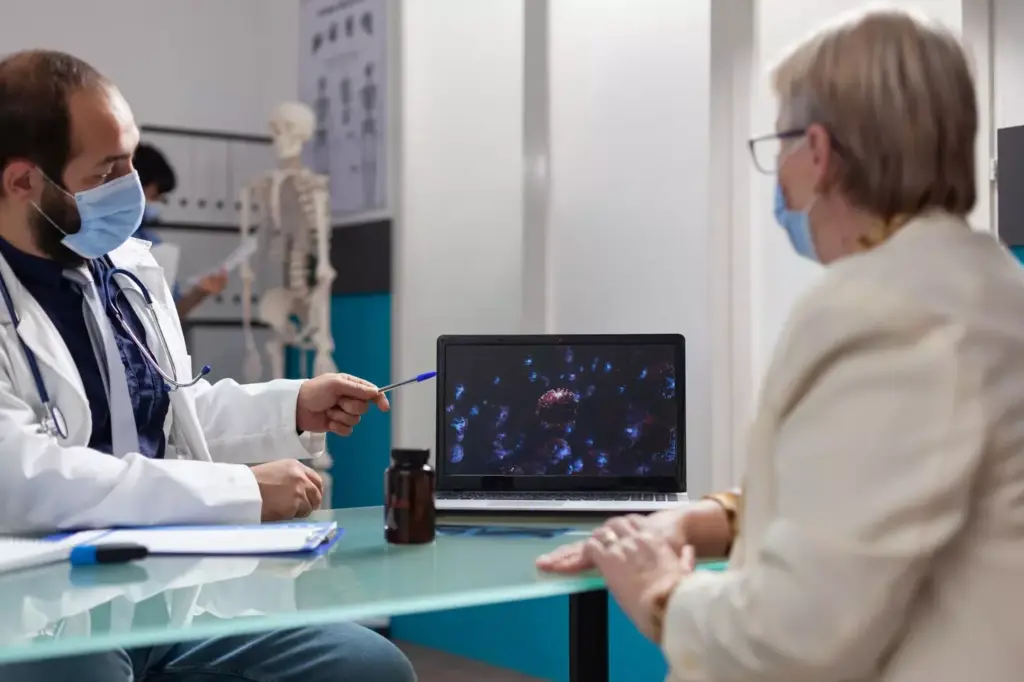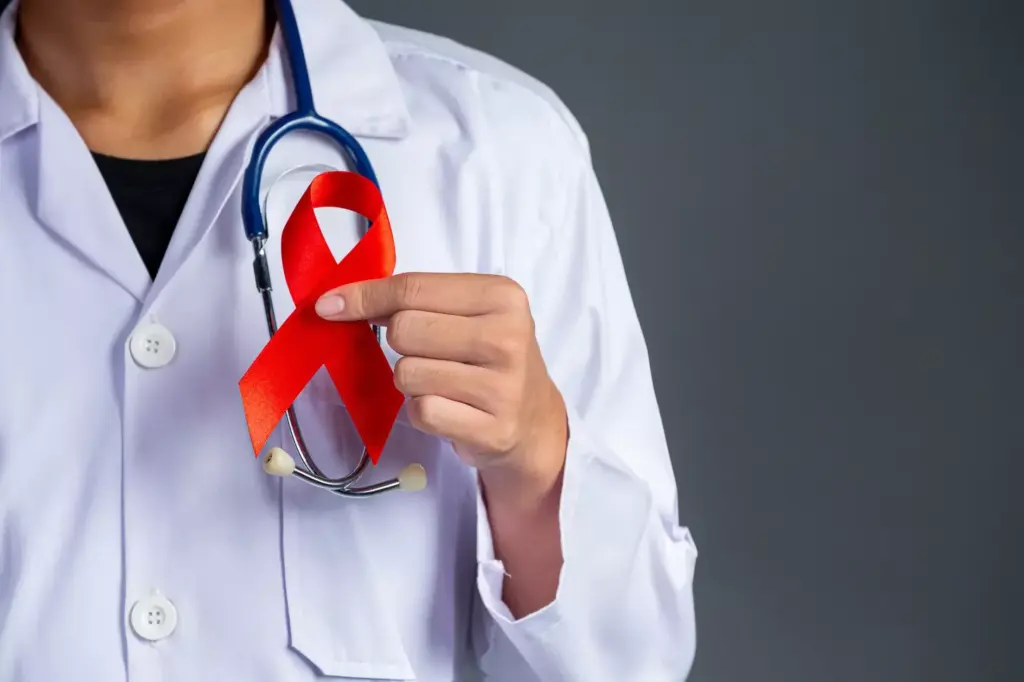Last Updated on November 26, 2025 by Bilal Hasdemir

It’s important to know about the different cancer types for diagnosis and treatment. At Liv Hospital, we offer top-notch care for many cancer types. There are over 100 kinds of cancer tumors, and knowing their names is key.
We look at the cancer that starts with L, including their names and types. This helps patients and families make better health choices. Our goal is to give world-class healthcare and support to international patients.
Key Takeaways
- Over 100 distinct cancer tumor types exist.
- Understanding cancer types is key for diagnosis and treatment.
- Liv Hospital offers advanced, patient-focused care.
- Knowing the names of different cancers is vital.
- We support international patients with full healthcare services.
Understanding the Diversity of Cancer Types
Cancer is a complex disease with over 200 types. It comes from different kinds of cancer cells and can show up in many ways in the body. Knowing the types of cancer and how they are grouped is key for good diagnosis and treatment.
The Spectrum of Over 200 Cancer Types
Research shows there are more than 200 types of cancer. They range from solid tumors to blood cancers. Each type has its own traits, like different cancer cells and growth patterns. This variety shows how complex cancer is and why we need treatments that fit each person.
Different cells and tissues get affected by cancer. Carcinomas come from epithelial cells, while sarcomas come from connective tissue. Leukemias and lymphomas affect the blood and lymphatic system. Knowing these differences helps us create better treatments.
How Cancers Are Named and Classified
Cancers are named and grouped based on where they start. This helps us understand the cancer, how it might act, and the best treatment. For example, adenocarcinoma starts in glandular tissue. Naming and grouping cancers gives us important info about their nature and how they might grow.
Staging is also part of cancer classification. It tells us how far the cancer has spread. Knowing the stage is key for planning treatment and predicting outcomes. Accurate staging and classification are essential for the best care for cancer patients.
The Importance of Accurate Diagnosis
Getting the right diagnosis is the first step to treating cancer. It means knowing the cancer type, stage, and other important details. A correct diagnosis lets doctors create a treatment plan that works best for each patient.
New diagnostic tools, like molecular and genetic tests, help us diagnose cancer better. These tools find specific biomarkers for different cancers, leading to more targeted treatments. Accurate diagnosis is vital because it directly affects treatment choices and patient results.
Cancer That Starts With L: Classification and Characteristics
Cancers starting with L are diverse, each with its own traits and types. These include laryngeal cancer, leukemia, leiomyosarcoma, lobular carcinoma, lung cancer, liver cancer, lymphomas, and lymphangiosarcoma. Knowing about these cancers is key for diagnosis and treatment.
Common Features Among L-Named Cancers
L-named cancers share some common traits. Many are aggressive and need quick treatment. For example, leukemia grows fast, affecting blood and bone marrow. On the other hand, laryngeal cancer often shows symptoms early, like voice changes.
We’ll look at what these cancers have in common. This includes where they start and how they grow. Knowing this helps doctors find better treatments.
Prevalence and Statistical Overview
The number of L-named cancers varies a lot. For instance, lung cancer is very common worldwide. But lymphangiosarcoma is much rarer. Knowing how common these cancers are helps plan health care.
| Type of Cancer | Estimated New Cases (US) | Estimated Deaths (US) |
|---|---|---|
| Lung Cancer | 228,820 | 135,720 |
| Leukemia | 61,780 | 22,840 |
| Liver Cancer | 41,260 | 30,520 |
| Laryngeal Cancer | 12,470 | 3,760 |
For more info on common cancers, check out Liv Hospital’s resource page.
General Risk Factors and Prevention
Risk factors for L-named cancers include genetics, environment, and lifestyle. For example, smoking increases risk for lung cancer and laryngeal cancer. Knowing these risks helps prevent and catch cancers early.
Prevention often means changing lifestyle and avoiding harmful substances. Regular check-ups also help find cancers early, improving treatment chances.
Laryngeal Cancer: Understanding Voice Box Malignancies
Laryngeal cancer affects the voice box and poses unique challenges. The larynx is key for speech and breathing. It’s a complex area where cancer can show up in different ways.
Types and Mass Characteristics
Laryngeal cancer is divided into three types based on where it is in the larynx. Glottic cancer, the most common, hits the vocal cords. The type of tumor can change how symptoms appear and how treatment is done.
- Glottic Cancer: Affects the vocal cords, often leading to early symptoms like hoarseness.
- Supraglottic Cancer: Occurs above the vocal cords, potentially causing swallowing difficulties.
- Subglottic Cancer: Rare and located below the vocal cords, often diagnosed at a later stage.
Risk Factors and Causes
Knowing the risk factors for laryngeal cancer is key for prevention and early detection. Main risk factors include:
- Smoking and tobacco use
- Heavy alcohol consumption
- Human papillomavirus (HPV) infection
- Exposure to certain chemicals and substances
Smoking is the biggest risk factor. It damages larynx cells, raising cancer risk.
Symptoms, Diagnosis, and Treatment
Symptoms of laryngeal cancer vary based on the tumor’s location and size. Common signs are persistent hoarseness, sore throat, and trouble swallowing. Diagnosis involves thorough exams, imaging tests, and biopsies.
Treatment for laryngeal cancer depends on the cancer’s stage, type, and the patient’s health. Options include:
- Surgery: To remove the tumor and affected tissues.
- Radiation Therapy: To kill cancer cells.
- Chemotherapy: To target cancer cells systemically.
- Targeted Therapy: To target cancer cells.
Early detection and a detailed treatment plan can greatly improve outcomes for laryngeal cancer patients.
Leukemia: Blood Cancer Variants and Progression
Leukemia is a serious health issue where abnormal white blood cells grow too much. It affects the blood and bone marrow. The impact on the body depends on the type and stage of leukemia.
Acute vs. Chronic Leukemia Types
Leukemia is divided into acute and chronic types. Acute leukemia grows fast and can cause severe symptoms quickly. Chronic leukemia grows slower, so symptoms take longer to show up.
Knowing if you have acute or chronic leukemia is important. Acute needs quick, strong treatment. Chronic might start with a gentler approach, watching it closely.
Cellular Changes and Blood Composition
In leukemia, blood cell production goes wrong. The bone marrow makes bad white blood cells, pushing out good ones. This can cause anemia, infections, and bleeding problems.
Leukemia changes blood composition a lot. Blood tests can find these bad cells. They help diagnose and track the disease.
Modern Treatment Approaches and Outcomes
Leukemia treatment has gotten better, with new ways to help patients. Chemotherapy targets fast-growing cancer cells. Targeted therapy attacks specific cancer cell flaws. Sometimes, bone marrow transplantation is an option for a cure.
How well patients do depends on the leukemia type, stage, and health. Thanks to new treatments, survival rates have improved. Research keeps looking for even better ways to help patients.
Leiomyosarcoma: Smooth Muscle Malignancy
Leiomyosarcoma is a rare cancer that affects smooth muscle tissue. This tissue is found in many parts of the body. It’s common in the uterus, stomach, and intestines.
Origin Sites and Tumor Characteristics
Leiomyosarcoma can occur anywhere smooth muscle is present. It often happens in the uterus, abdomen, and the GI tract. Tumors can be different sizes and vary in how aggressive they are.
Tumor Characteristics: These tumors can grow big before symptoms show up. They might be soft or hard and can have dead tissue areas.
Diagnostic Challenges and Staging
Diagnosing leiomyosarcoma is hard because it’s rare and symptoms are not clear. MRI and CT scans are key for finding and checking the tumor’s size.
Staging: Staging depends on the tumor’s size, where it is, and if it has spread. Knowing the stage helps decide the best treatment.
| Stage | Description | Typical Treatment |
|---|---|---|
| I | Tumor is localized and small | Surgery |
| II | Tumor is larger or has spread to nearby tissues | Surgery and radiation therapy |
| III | Tumor has spread to distant sites | Chemotherapy and targeted therapy |
Treatment Options and Prognosis
Treatment for leiomyosarcoma depends on the tumor’s stage and location. Surgery is often the first step. Radiation and chemotherapy are used for more advanced cases.
Prognosis: The outlook for leiomyosarcoma patients varies. It depends on the stage at diagnosis and the tumor’s type. Early-stage tumors have a better chance of recovery.
Lobular Carcinoma: Breast Cancer Subtype
It’s important to know about lobular carcinoma to treat breast cancer well. This type of cancer starts in the lobules of the breast. Lobules are the glands that make milk.
In Situ vs. Invasive Forms
Lobular carcinoma comes in two main types: lobular carcinoma in situ (LCIS) and invasive lobular carcinoma (ILC). LCIS means abnormal cells are stuck in the lobules. ILC means cancer cells have spread to other parts of the breast.
LCIS is not a true cancer but shows a higher risk of getting breast cancer. ILC, though, is a real cancer that needs quick and right treatment.
Distinctive Growth Patterns and Detection
ILC is hard to find because of how it grows. It grows in a line, unlike other cancers. This makes it tough to spot by touch or mammogram.
But, ultrasound and MRI help find lobular carcinoma. They help see how far the cancer has spread and what treatment to use.
Treatment Strategies and Outcomes
Treating lobular carcinoma depends on many things. These include the cancer’s stage, type, and the patient’s health. Treatments might be surgery, radiation therapy, or chemotherapy.
For LCIS, the goal is to stop invasive cancer from happening. This might mean watching closely, hormone therapy, or surgery to prevent it. ILC treatment usually starts with surgery, like removing the tumor or the whole breast. Then, more treatments are used to lower the chance of it coming back.
Knowing how lobular carcinoma works and how to treat it is key to better care. A treatment plan made just for the patient can lead to better health and longer life for those with this cancer type.
Lung Cancer: Types, Detection, and Management
Lung cancer is a major cause of death worldwide. It is divided into two main types: small cell lung cancer (SCLC) and non-small cell lung cancer (NSCLC). Knowing about these types is key to effective treatment.
Small Cell and Non-Small Cell Classifications
Non-small cell lung cancer makes up about 85% of cases. It includes subtypes like adenocarcinoma and squamous cell carcinoma. Small cell lung cancer grows and spreads quickly, needing different treatments.
Tumor Characteristics and Staging
The size and spread of lung tumors are important for treatment. Staging looks at the tumor size, lymph node involvement, and if it has spread. Accurate staging is vital for the right treatment plan.
- Tumor size and location
- Lymph node involvement
- Metastasis to other organs
Treatment Modalities and Survival Rates
Treatment for lung cancer varies based on the type, stage, and patient’s health. Options include surgery, radiation, and chemotherapy. Early detection significantly improves survival rates, making screening important for high-risk groups.
| Stage | Treatment Options | 5-Year Survival Rate |
|---|---|---|
| Early Stage | Surgery, Radiation | 60-80% |
| Advanced Stage | Chemotherapy, Targeted Therapy | 5-10% |
We aim to provide top-notch care for lung cancer patients. We use the latest treatments and support services to enhance outcomes and quality of life.
Liver Cancer: Primary and Secondary Hepatic Tumors
It’s important to know about liver cancer to get the right treatment. Liver cancer can start in the liver or spread from other places. This makes it a complex issue.
Hepatocellular Carcinoma and Other Variants
The main type of liver cancer is hepatocellular carcinoma (HCC). It comes from the liver’s main cells. Other types include intrahepatic cholangiocarcinoma and hepatic angiosarcoma, which are less common.
Secondary liver cancer happens when cancer from other places grows in the liver. This often comes from the colon, breast, or lung.
Risk Factors and Global Distribution
Many things can increase your risk of liver cancer. These include hepatitis B or C, cirrhosis, and drinking too much alcohol. Aflatoxins also play a role.
In places like Asia and Africa, liver cancer is more common. This is because hepatitis B is more widespread there.
In the U.S., liver cancer cases are going up. This is partly because of hepatitis C and more cases of non-alcoholic fatty liver disease (NAFLD).
Diagnostic Methods and Treatment Options
To find liver cancer, doctors use ultrasound, CT scans, and MRI. Sometimes, a biopsy is needed to be sure. The treatment depends on the cancer’s stage and type.
For early HCC, surgery or a liver transplant might cure it. For more advanced cases, treatments like sorafenib or lenvatinib are used.
We aim to give the best care for liver cancer patients. We use a team approach to help them get better.
Lymphomas: Cancers of the Lymphatic System
It’s important to understand lymphomas to find better treatments. Lymphomas are cancers that start in the lymphatic system. This system is key to our immune health.
Hodgkin vs. Non-Hodgkin Lymphoma Types
Lymphomas are split into two main types: Hodgkin lymphoma (HL) and non-Hodgkin lymphoma (NHL). Hodgkin lymphoma has Reed-Sternberg cells, which are abnormal lymphocytes. Non-Hodgkin lymphoma, by contrast, includes many different cancers without these cells.
“Knowing the difference between Hodgkin and non-Hodgkin lymphoma is key,” says Dr. Jane Smith, a top oncologist. “It helps decide the best treatment and what to expect for the patient.”
Nodal and Extranodal Presentations
Lymphomas can show up in lymph nodes (nodal) or in other body parts (extranodal). Nodal lymphomas usually affect lymph nodes in the neck, armpits, or groin. Extranodal lymphomas can happen in places like the stomach, skin, or brain.
- Nodal lymphomas often cause lymph nodes to swell.
- Extranodal lymphomas can lead to different symptoms based on where they are.
Treatment Approaches and Survival Rates
Treatment for lymphomas depends on the type, stage, and patient’s health. Chemotherapy, radiation therapy, and immunotherapy are common treatments. New targeted therapies have also helped improve patient outcomes.
| Type of Lymphoma | 5-Year Survival Rate |
|---|---|
| Hodgkin Lymphoma | 85% |
| Non-Hodgkin Lymphoma | 72% |
As we learn more about lymphomas, we’re finding better ways to treat them. Our aim is to give each patient the care they need, tailored to their situation.
Rare L Cancers: Lymphangiosarcoma, Liposarcoma, and Lentigo Maligna Melanoma
Lymphangiosarcoma, liposarcoma, and lentigo maligna melanoma are rare ‘L’ cancers. They are hard to diagnose and treat. We will look into each one, highlighting their unique traits and treatment options.
Lymphangiosarcoma: Vascular System Cancer
Lymphangiosarcoma is a rare and aggressive cancer. It starts in the lymphatic vessels. It often happens in people with chronic lymphedema, leading to Stewart-Treves syndrome.
Key characteristics and challenges:
- Aggressive tumor growth
- Association with chronic lymphedema
- Difficulty in early detection
- Poor prognosis due to late diagnosis
Liposarcoma: Fatty Tissue Malignancy
Liposarcoma is a cancer that starts in fat cells in deep soft tissue. It’s a common soft tissue sarcoma. Its aggressiveness and metastasis risk vary.
Subtypes and treatment:
- Well-differentiated liposarcoma: Less aggressive and often treated with surgery.
- Dedifferentiated liposarcoma: More aggressive and may require a combination of surgery, radiation, and chemotherapy.
Lentigo Maligna Melanoma: Skin Cancer Variant
Lentigo maligna melanoma starts from lentigo maligna, a precancerous lesion. It often appears on sun-damaged skin in older people. The cancer grows deeper into the skin as it progresses.
Risk factors and management:
- Prolonged sun exposure
- Age and fair skin
- Surgical excision is the primary treatment
Understanding these rare ‘L’ cancers is key to better diagnosis and treatment. We keep learning and improving care for those with these complex conditions.
Conclusion: Advances in Diagnosis and Treatment of L Cancers
Recent advances in cancer treatment have greatly improved survival rates for many cancers, including those starting with ‘L’. At Liv Hospital, we’ve seen big steps forward in treating laryngeal cancer, leukemia, and other ‘L’ cancers.
We’re committed to top-notch healthcare, using the newest treatments and methods. This has made life better for our patients. We’ve seen big improvements in treating ‘L’ cancers, from laryngeal and lung to lymphomas and rare cancers like lymphangiosarcoma.
Using new diagnostic tools and treatments has been key to our progress. Our teams work closely with patients for personalized care. We aim to keep improving cancer treatment and support our international patients with the best healthcare.
FAQ
What are the different types of cancer that start with the letter ‘L’?
Cancers starting with ‘L’ include laryngeal cancer and leukemia. Also, leiomyosarcoma, lobular carcinoma, lung cancer, liver cancer, and lymphomas are among them.
How many kinds of cancer are there?
Over 200 types of cancer have been identified. Each has its own unique characteristics and classification.
What is laryngeal cancer, and what are its risk factors?
Laryngeal cancer affects the voice box. Risk factors are smoking, alcohol, and exposure to certain chemicals.
What are the different types of leukemia?
Leukemia is divided into acute and chronic types. Each has different cellular changes and treatment methods.
What is leiomyosarcoma, and how is it diagnosed?
Leiomyosarcoma is a rare cancer affecting smooth muscle. Diagnosis is challenging and often involves imaging and biopsy.
What is lobular carcinoma, and how is it treated?
Lobular carcinoma is a breast cancer subtype affecting the lobules. Treatment depends on the cancer’s stage and type.
What are the different types of lung cancer?
Lung cancer is divided into small cell and non-small cell types. Each has different tumor characteristics and treatment options.
What is liver cancer, and what are its risk factors?
Liver cancer is a major concern worldwide. Risk factors include hepatitis B and C, cirrhosis, and aflatoxin exposure.
What are lymphomas, and how are they treated?
Lymphomas are cancers of the lymphatic system. They include Hodgkin and non-Hodgkin lymphoma. Treatment depends on the type and stage.
What are some rare ‘L’ cancers, and how are they treated?
Rare ‘L’ cancers include lymphangiosarcoma, liposarcoma, and lentigo maligna melanoma. Treatment varies by type and stage.
How are cancers that start with ‘L’ diagnosed and treated?
Diagnosis and treatment of ‘L’ cancers depend on the type and stage. Various treatments are available, including surgery, radiation, and chemotherapy.
References
- National Cancer Institute. (n.d.). Cancer types: A to Z list of cancer types. Retrieved from https://www.cancer.gov/types Cancer.gov
- Cancer Research UK. (n.d.). Types of cancer. Retrieved from https://www.cancerresearchuk.org/about-cancer/type Wikipedia
- WebMD. (n.d.). Cancer A to Z: List of cancer types. Retrieved from https://www.webmd.com/cancer/cancer-a-to-z
- American Cancer Society. (n.d.). Cancer types. Retrieved from https://www.cancer.org/cancer/types.html Cancer.org
- MD Anderson Cancer Center. (n.d.). Cancer types. Retrieved from https://www.mdanderson.org/patients-family/diagnosis-treatment/cancer-types.html








